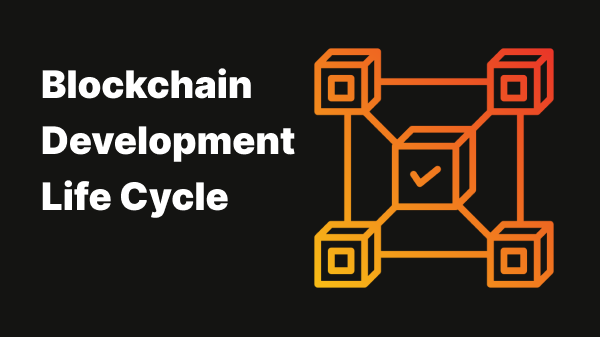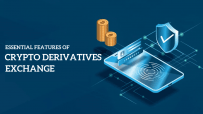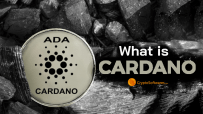
Blockchain Development Life Cycle – Step by Step Guide
SubscribeWell, a lot of industries have been embracing Blockchain technology to make their business more smooth and efficient. Thus, for starters, a basic understanding of the blockchain development life cycle is very important.
This blog intends to list out the various steps involved in the life cycle of Blockchain Development
Read on to find more.
Blockchain Development Life Cycle

This part plays a significant role in your Blockchain Development Life Cycle. The use case you select should match your business needs. Blockchain provides the advantages given below. They are:
Blockchain allows you to store data in any format. This data can be shared only through Crypto based authentication procedures. It’s safe and secure when compared to other conventional methods.

Smart Asset Management
Blockchain allows you to manage smart assets. It includes issuance, payment, exchange, escrow, and retirement.

Smart Contracts
Smart contracts are what run the transactions more smoothly, without any involvement of third parties.
Select a suitable consensus algorithm that suits your business style. The commonly used consensus methods are Proof of Work (PoW) and Proof of Stake (PoS)

PoW (Proof of Work)
PoW is the consensus algorithm that uses a tremendous processing power to validate every action on the blockchain. It utilizes miners that solve challenging mathematical puzzles to validate transactions and avert fraud activities.

PoS (Proof of Stake)
PoS, on the other hand, is the consensus mechanism that depends on validators rather than miners, and requires less computing power. On PoS blockchains, the owners of cryptocurrency verify the transactions themselves.
Proof of Stake is preferred over Proof of Work as it isn’t as costly as Proof of Work while most of the developers prefer Proof of Work.
Other mechanisms used are Proof of Burn, Practical Byzantine fault-tolerant Mechanism, Proof of Identity, Proof of Elapsed Time, and Proof of Importance. Everyone has their advantages and disadvantages.
Multiple platforms are available, which were developed by leaders like Oracle, IBM, etc., and the final choice largely depends on the distinctiveness of your project. Some examples of the most commonly used Blockchain platforms are:
- Ethereum
- Hyperledger Fabric
- IBM Blockchain
- Multichain
- Hydrachain
- Ripple
- R3 Corda
- BigChainDB
- Open-chain
- IOTA
After choosing a blockchain development platform, it is necessary to decide on the internal nodes’ architecture. Nodes in a network can be operated in various ways as given below:
- Permission – Procedures run by Government like a land registry, Voting systems, etc
- Permissionless – In permissionless networks anyone can mine the Cryptocurrencies. There is no need for any special kind of permission
- Private Blockchain – Contract management systems in hospitals and pharmaceutical companies
- Public Blockchain – Asset-backed Cryptocurrencies
- Hybrid – A group of financial institutions which run on a shared KYC platform
Other factors to look at are hardware configurations like memory, processors, disk size, etc. In addition, the operating system that you choose is also essential. Ubuntu, CentOS, Debian, Fedora, Red Hat, and Windows are the most commonly used operating systems
Here is where you execute permissions, block signatures and address formats. You should ensure how effective everything is because this information can’t be changed once it gets to the blockchain.
Some important elements that you need to take care of while configuring the application are permissions, asset issuance, asset re-issuance, atomic exchanges, key management, multi signatures, parameters, native assets, address formats, key formats, block signatures, etc.
APIs act as a middleman between two different applications. In the blockchain, APIs ensure that the application will operate correctly on the blockchain network.
Certain Blockchain platforms come up with in-build APIs and some don’t. The things that demand an API include:
- Generating key pairs and addresses
- Performing audit-related functions
- Data authentication through digital signatures and hashes
- Data storage and retrieval
- Smart-asset lifecycle management –issuance, payment, exchange, escrow, and retirement
- Smart contracts
In this stage of the Blockchain development life cycle, we deal with designing the user and admin interfaces and the selection of the front end or the one that the users have to interact with
Select a suitable programming language like HTML5, CSS, PHP, C#, Java, Javascript, Python, Ruby, Golang, Solidity, AngularJS, Nodejs, etc., depending on the project’s peculiarity. Further, choose an apt Database like MySQL or MongoDB as well as the servers like Web servers, etc
One can make your Blockchain platform future-ready by integrating the platform with Artificial Intelligence, IoT, Big Data, etc.
The last and final milestone blockchain development life cycle is building MVP. Being the fundamental version of a blockchain system, it enables the developers and creators to see whether the project is viable or not. MVP is generally used to identify the issues and to test the functionalities
Conclusion
Having a basic understanding of the various steps involved in the Blockchain development life cycle is very much vital if you are planning to implement this technology with your business.
This article will provide you with various steps involved in the blockchain development life cycle.
FAQs
What is the first key step towards developing a blockchain solution?
Step one in blockchain development is to identify a use-case that makes business sense. The use case you select should match your business needs.
What are the factors that hinder the development of blockchain?
Various factors impede the adoption of blockchain technologies, including technological barriers, constraints rooted in organizations and the environment, and system-related governmental barriers.
- What is Cryptojacking? Detection and Preventions Techniques
- How to Give Cryptocurrency As a Gift?
- Blockchain Development Life Cycle – Step by Step Guide
- How To Hire A Blockchain Developer For Your Company
- How to Choose the Right Bitcoin Development Company – A Complete Guide
- Common Bitcoin Scams – Beware Of Fraudsters
- How can entrepreneurs leverage blockchain in 2023?
- Role of Blockchain in Cyber Security
- Document and Certificate Verification Through Blockchain Technology
- Initial Coin Offering (ICO): Everything you need to know in 2023
- Categories
- Azure Blockchain Service
- Bitcoin
- Bitcoin Development
- Blockchain Application
- Blockchain Application Development
- blockchain developer
- Blockchain Development
- common bitcoin scams
- Crypto software features
- Crypto softwares
- Cryptocurrency
- Cryptocurrency Development
- Cryptocurrency Exchange Software Development
- Cryptocurrency review
- Cryptocurrency Trading
- Cryptocurrency Wallet Development
- ERC20 Token Development
- Hashing Algorithm
- ICO Development
- ICO Development Service
- ico website development
- Proof of Stake Coins
- Smart Contract Development
- Uncategorized













Hi guys and thanks for this valuable article. Great job!